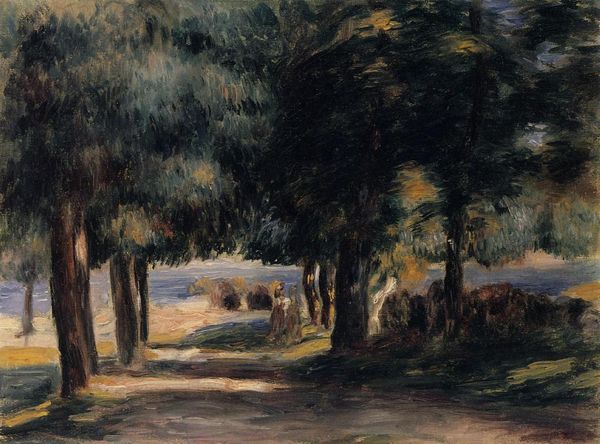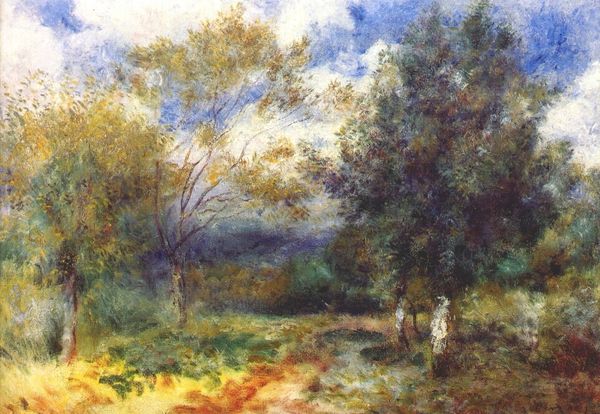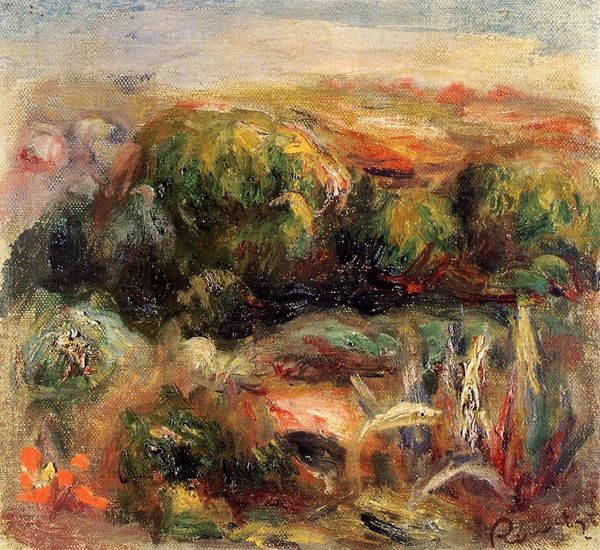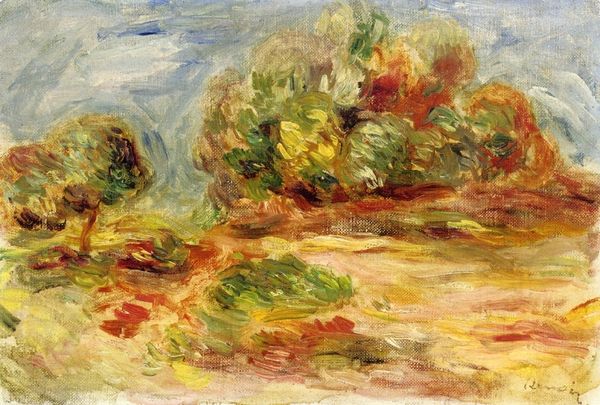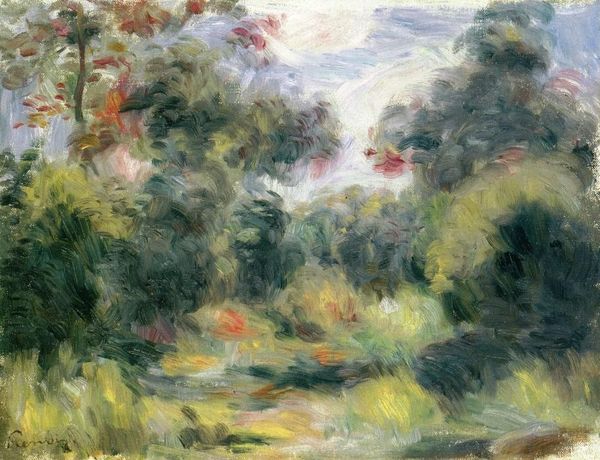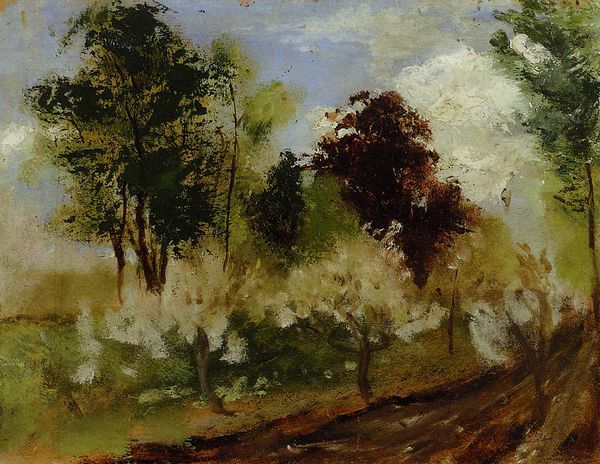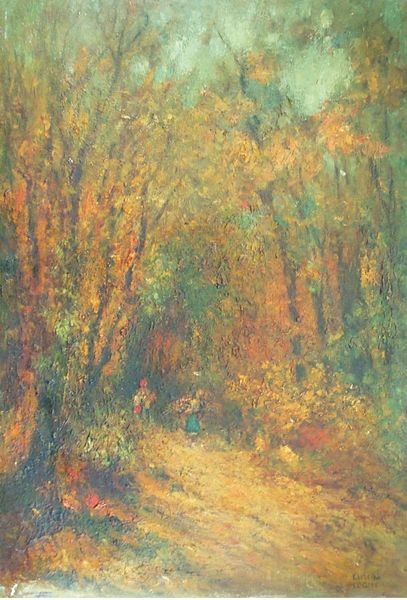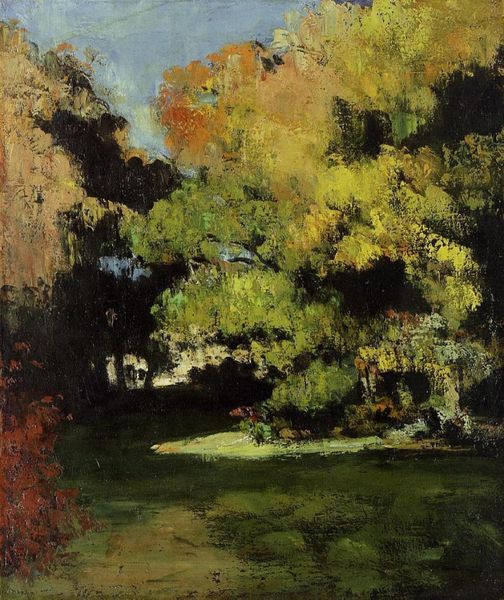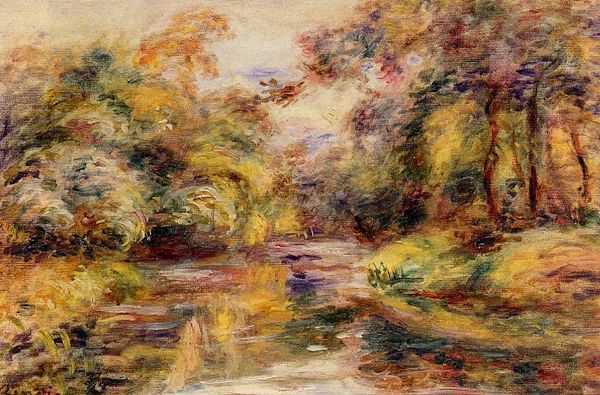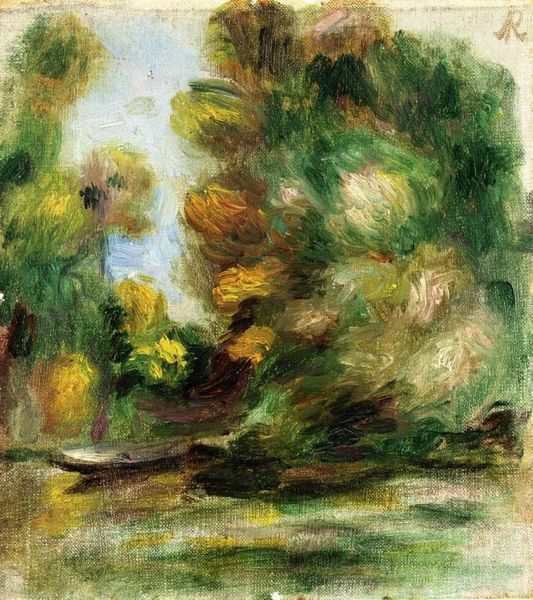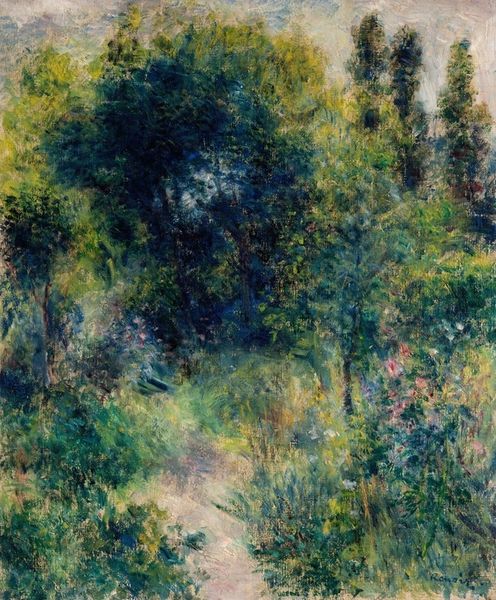
painting, plein-air, oil-paint
#
tree
#
painting
#
impressionism
#
plein-air
#
oil-paint
#
landscape
#
impressionist landscape
#
nature
#
watercolor
Copyright: Public domain
Editor: So, this is "Landscape with Trees," an oil painting by Pierre-Auguste Renoir. It’s very evocative, almost dreamlike in its haziness. It definitely gives the feeling of a fleeting moment captured en plein air. How do you interpret this work? Curator: It’s fascinating to consider this through a lens of societal access and privilege. Renoir, afforded the leisure and resources, captured landscapes in a manner then celebrated. But how did class structures influence who was even *allowed* to represent landscape? Were working-class or marginalized perspectives equally valued or even visible within the artistic landscape itself? Editor: That's a perspective I hadn’t considered. I was mainly focusing on the visual aspects and the impressionistic style, like the brushstrokes and the way light is rendered. Curator: Right, and the impressionistic style itself was a challenge to academic painting! But even within that "rebellion," it's important to ask who that rebellion was for, and who it excluded. Consider the absence of figures. What does the empty path signify? A path open to all? Or a space coded as ‘safe’ for a certain class, race, or gender? Editor: Hmm, I suppose the lack of human presence does leave it open to interpretation. Is it idyllic escape, or a subtly policed space? Curator: Precisely. The historical context demands we examine whose perspectives are privileged. Landscape isn't neutral; it's culturally and politically charged. Editor: It really opens my eyes to how much more there is to see beyond the surface. I definitely won't look at landscapes the same way again! Curator: Good. Recognizing that art and its interpretation are inseparable from the power structures surrounding it. That's the first step.
Comments
No comments
Be the first to comment and join the conversation on the ultimate creative platform.
